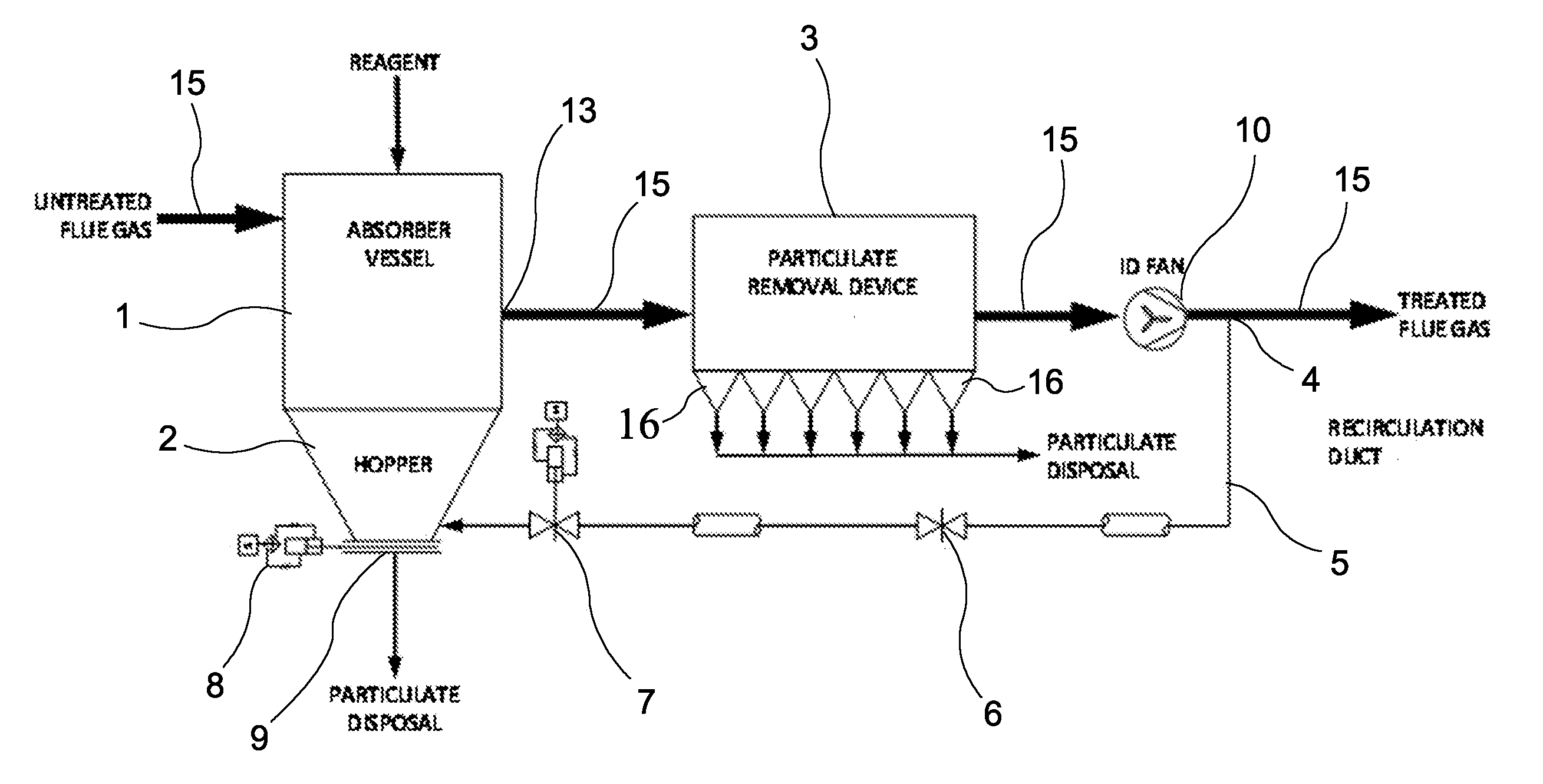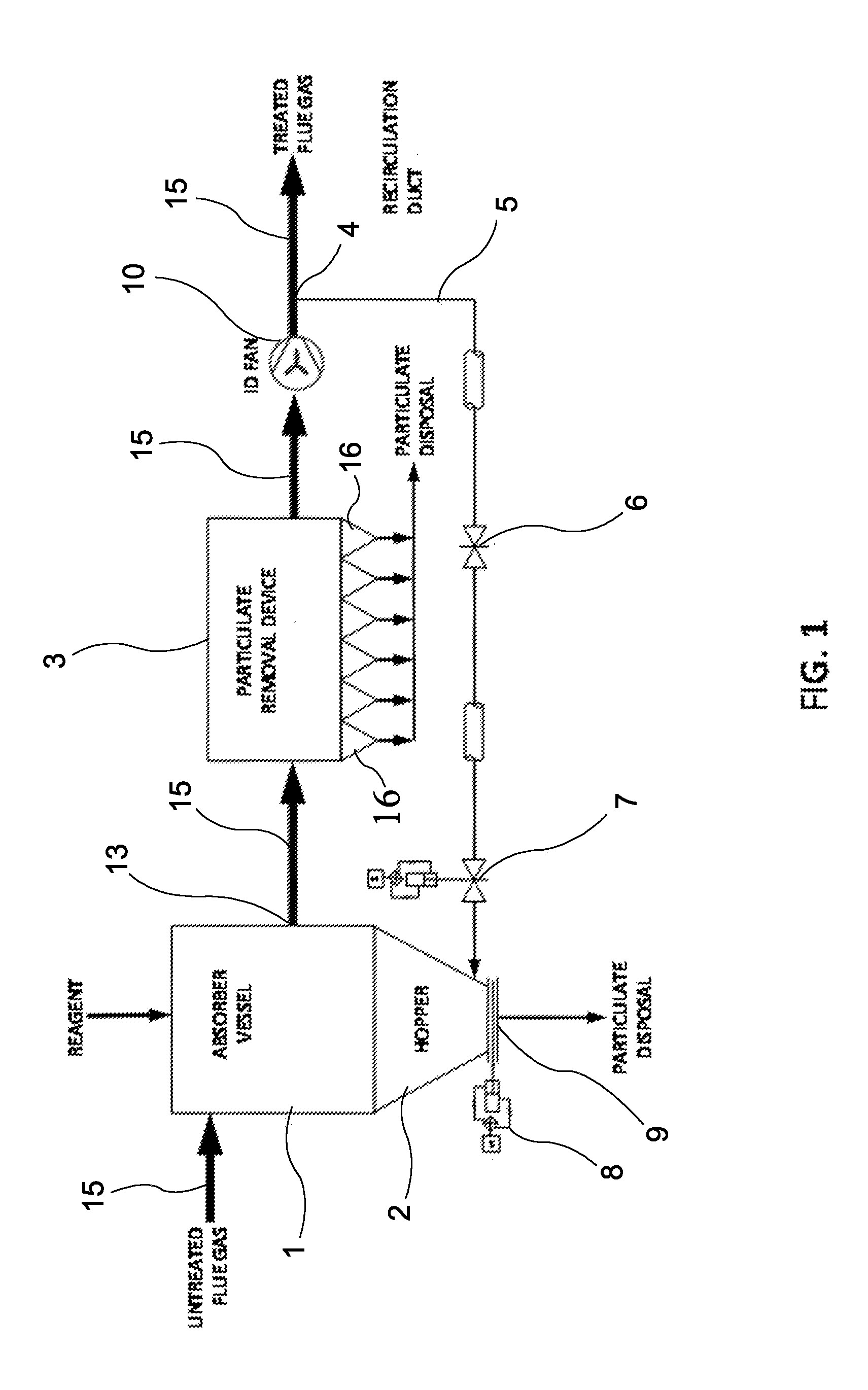Flue gas recirculation system
a flue gas recirculation and recirculation system technology, applied in the direction of lighting and heating apparatus, separation processes, instruments, etc., can solve the problems of fragments being too heavy to be conveyed, affecting the flow rate of flue gas, so as to prevent both the accumulation of particulate matter and excessive corrosion, and reduce the amount of particulate material , the effect of reducing the amount of particulate material
- Summary
- Abstract
- Description
- Claims
- Application Information
AI Technical Summary
Benefits of technology
Problems solved by technology
Method used
Image
Examples
Embodiment Construction
[0016]Referring now to FIG. 1, a DFGT system is illustrated which depicts one embodiment of the present invention. In the previously described DFGT process, untreated flue gas is introduced into an absorber vessel 1 where it is brought into contact with a reagent that is injected into the flue gas stream. Pollutants react with the reagent in the absorber vessel to produce solid particulate matter suspended in the flue gas stream which travels along its path directed by flue gas conduit 15 as it is processed. The flue gas stream containing particulate matter then exits the vessel at the absorber outlet 13 and passes through a flue gas conduit to a fabric filter or electrostatic precipitator unit 3 to remove the particulate matter from the flue gas stream for disposal. Passage of the flue gas stream from the absorber vessel inlet through the absorber vessel and particulate removal device 3 is induced by a fan 10 located downstream of the filter unit through a flue gas conduit 15 shown...
PUM
| Property | Measurement | Unit |
|---|---|---|
| thickness | aaaaa | aaaaa |
| thickness | aaaaa | aaaaa |
| temperatures | aaaaa | aaaaa |
Abstract
Description
Claims
Application Information
 Login to View More
Login to View More - R&D
- Intellectual Property
- Life Sciences
- Materials
- Tech Scout
- Unparalleled Data Quality
- Higher Quality Content
- 60% Fewer Hallucinations
Browse by: Latest US Patents, China's latest patents, Technical Efficacy Thesaurus, Application Domain, Technology Topic, Popular Technical Reports.
© 2025 PatSnap. All rights reserved.Legal|Privacy policy|Modern Slavery Act Transparency Statement|Sitemap|About US| Contact US: help@patsnap.com



